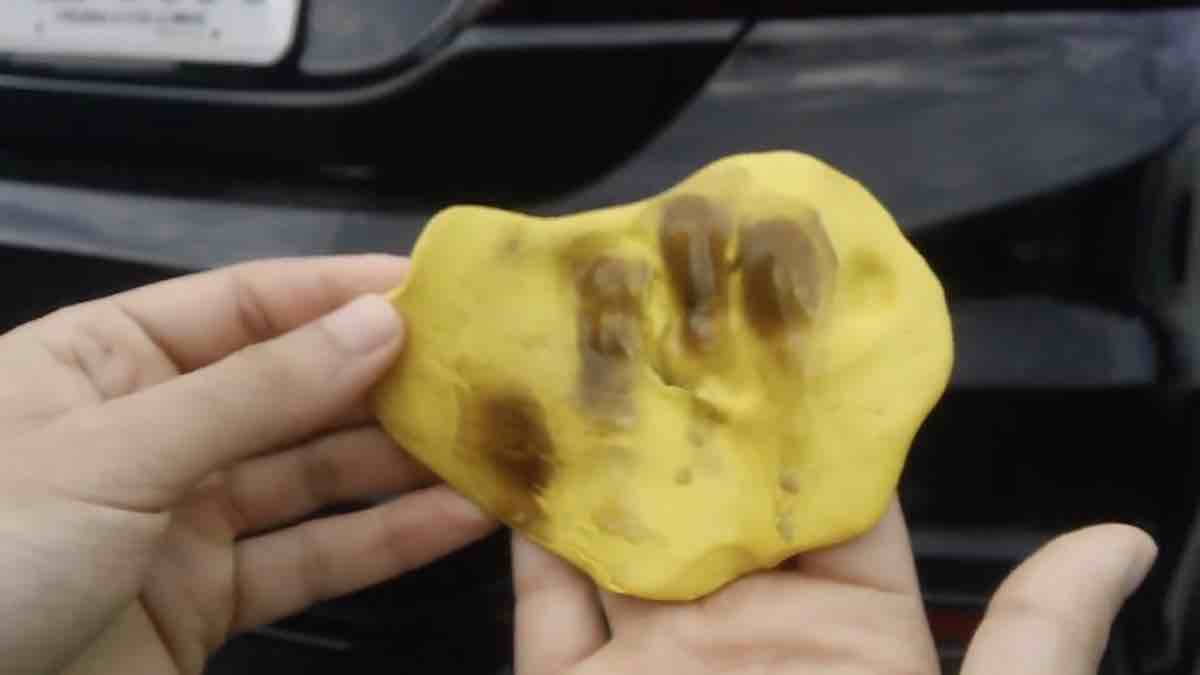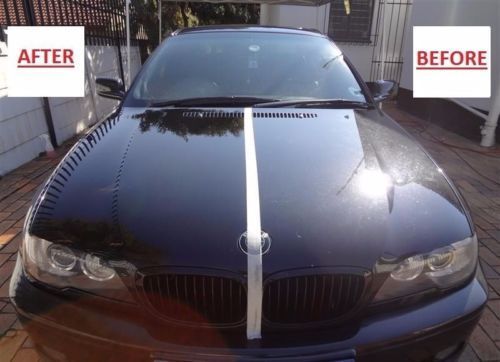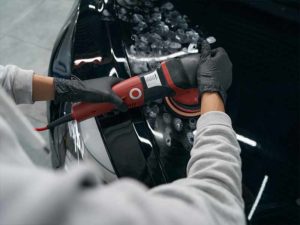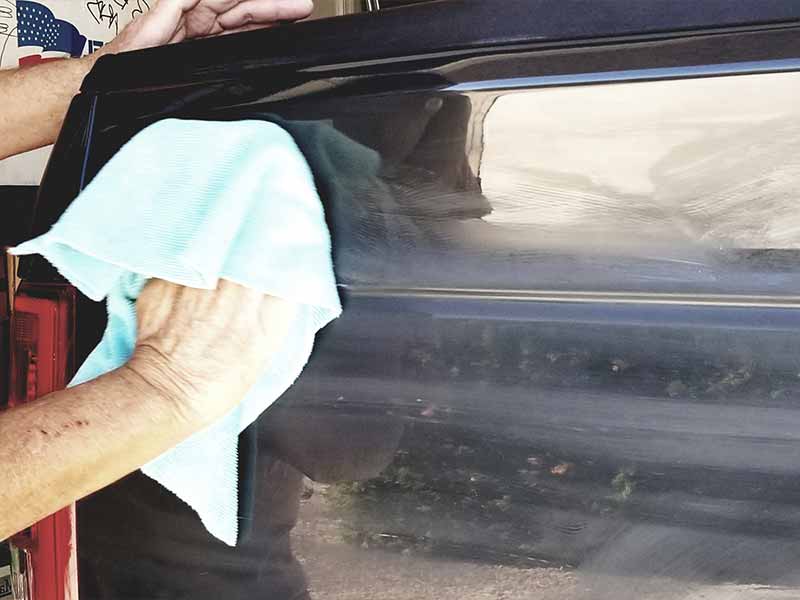Table of Contents
Claying your car is an integral part of achieving that glass-like look. Claying your car is a step in the process that primarily serves the purpose of removing contaminants in your paint that simply washing won’t remove.
If you have an older car that has never been clay barred then you will probably be able to see a more dramatic difference. Your paint should become clearer and shinier after claying whether you car has a lot of build up of stuck-on road grime or just a little.
If you are good about caring for your car then you likely won’t have nearly as much to remove but you will still likely be surprised how dirty your clay bar looks after a bit of work.
Claying your car is just as important for protecting your clear coat and paint as it is for visual appeal.
Clay Bar Car Before And After
The best way to tell if your car needs to be clay barred is to run your hand over the finish after you’ve washed it. If it feels glassy smooth you’re probably fine. If it feels slightly rough you should consider breaking out your clay bar kit and having a go at it. You can also visually inspect it.
It will also protect your paint from scratches as it removes the stubborn road debris that could flake off as you’re wiping down your car and create swirls and scratches.
It’s also a must to do prior to applying wax, sealant, or a ceramic coating. It’s even more important to do prior to doing any polishing to remove swirls and scratches.
I wouldn’t necessarily expect a clay bar session to be a make or break step to visually improving the look of the finish on your car is newer and kept clean.
If your vehicle is particularly nasty it definitely will be night and day, but never the less it’s going to be one of many steps that will get you to a new car-like shine and help prevent damage to your clear coat.
How to clay bar a car?
Using a clay bar is very easy but you must use a clay bar lubricant and ensure the car has been thoroughly washed first.
Spray the lubricant onto the surface you want to clay in roughly a 2 foot square area. Take a small piece of clay bar and rub it in straight lines across this area gently.
You don’t need to use much force. You just want the clay to glide across the surface. Avoid circular motions.
The reason for moving the clay in straight lines instead of circular motions is in the event that something hard accidentally works its way into the clay, you will create straight line scratches as opposed to swirls. Swirls stand out more. Straight lines are less likely to be noticed.
To help avoid creating scratches be sure and knead the clay by folding it over regularly and moving the contaminants collection deep within the clay.
If you accidentally drop your clay throw it away. Do not attempt to use it. Sand or bits of rock will get picked up by the clay and definitely create lots of scratches.
After you’ve finished claying the first 2 foot square section and it feels glassy smooth continue on to the next section.
Once you’re done you should have a nice super smooth finish on your car and it is ready to have a quality wax, sealant, or ceramic coating.
How does a clay bar work?
After a lubricant is sprayed onto the surface of your car a clay bar can glide across the surface. As it glides across, any contaminants stuck to the finish protrude up off the surface and will get embedded into the clay.
The clay bar will pull the contaminant off the surface and keep it stuck within the clay. The clay bar may need to be rubbed over some areas several times to adequately pull out difficult stuck on debris.
Usually not much effort is required and gently gliding the clay back and forth will do an amazing job of pulling up contaminants.
What does a clay bar remove?
Essentially a clay bar is used to remove contaminants from paint that could not be removed by only washing the car. Bits of road grime, tar, insects, hard water spots, brake dust, and more will stick to your clear coat and begin to break it down or otherwise damage it.
Some contaminants can even penetrate through the clear coat and begin damaging the paint itself. The longer they stay on your car the longer they have to do damage to your clear coat and paint.
You will be amazed at how much a clay bar can remove from what you thought was an otherwise perfectly clean car.
A clay bar will not remove any of your clear coat or damage your car or trucks finish. It might create scratches if an abrasive contaminant is picked up by the clay and gets pressed into the clear coat as you are claying. Be sure to fold your clay bar often or replace it with a fresh piece.

How often should you clay bar your car?
This greatly depends upon a lot of different factors. How often do you drive your car? How many miles do you typically put on your car over a given time? Is your car garaged? What is the environment like where you frequently drive?
There is no general rule of thumb for how often to use a clay bar on your car. Some say 3 or 4 times a year. Obviously this wouldn’t be necessary for a garage kept weekend car. I for instance have a tree near where I park my car that leaves a lot of sap heavily during the spring. It’s a challenge to keep it off my car and it’s difficult to remove.
Just washing won’t take care of it so using a clay bar frequently during this time is a good idea. The rest of the year it doesn’t need to be done very often.
You shouldn’t necessarily plan to clay bar your car on a regular basis. Inspect the paint regularly and make the call based on the inspection.
How do I know if I need to clay my car?
The best way to tell if your car needs to be clay barred is to run your hand over the finish after you’ve washed it.
If it feels glassy smooth you’re probably fine. If it feels slightly rough you should consider breaking out your clay bar kit and having a go at it.
You can also visually inspect it. Often you can see contaminants in certain areas. Behind the wheel wells, near the exhaust, the front bumper, the leading edge of the hood, these are all common areas that debris will get stuck to the surface heavily and can be easily seen.
After clay bar what is the next step?
After you’ve thoroughly clay barred your car you have different choices for what step to take next depending on the state of your car. Often when claying a car there is no wax or other protectant on the surface.
Clay lubricant sometimes is a spray wax. If there is no wax or other protection on your car after claying you should plan to apply a good quality protective coating.
A quality paint sealant that will hold up for many months is highly recommended. Wolfgang Deep Gloss Paint Sealant is a very good choice.
Waxing can be a good choice if you plan to wax monthly. If your clay lubricant is a spray wax don’t expect it to be a long lasting protectant. It will typical last weeks at best.
Helpful Links
Conclusion
Clay barring a car isn’t a detailing step that will typically make a biggest difference to the visual appearance of your car but it is one of the critical steps necessary to achieve the glass-like new car finish we all desire.
If it is particularly dirty and a lot of contaminants are still stuck to the surface after a thorough washing it will be the difference between a clean car and a glossy, glass like finish.
Claying your car is very important for protecting your paint as well as making it look good. Contaminants such as overspray, road tar, bugs, salts, and more can embed themselves into the clear coat and over time eat away at it if they aren’t removed.
It is truly amazing to see how much a clay bar can remove from what appears to be an otherwise clean car. A clay bar is also good for helping minimize swirls and scratches since it removes potentially abrasive elements that could find their way onto your wash mitt or drying towel and cause scratches.
If you feel the surface of your vehicle and it doesn’t feel super smooth you may want to consider picking up a clay bar kit and giving your clear coat a deep clean.










